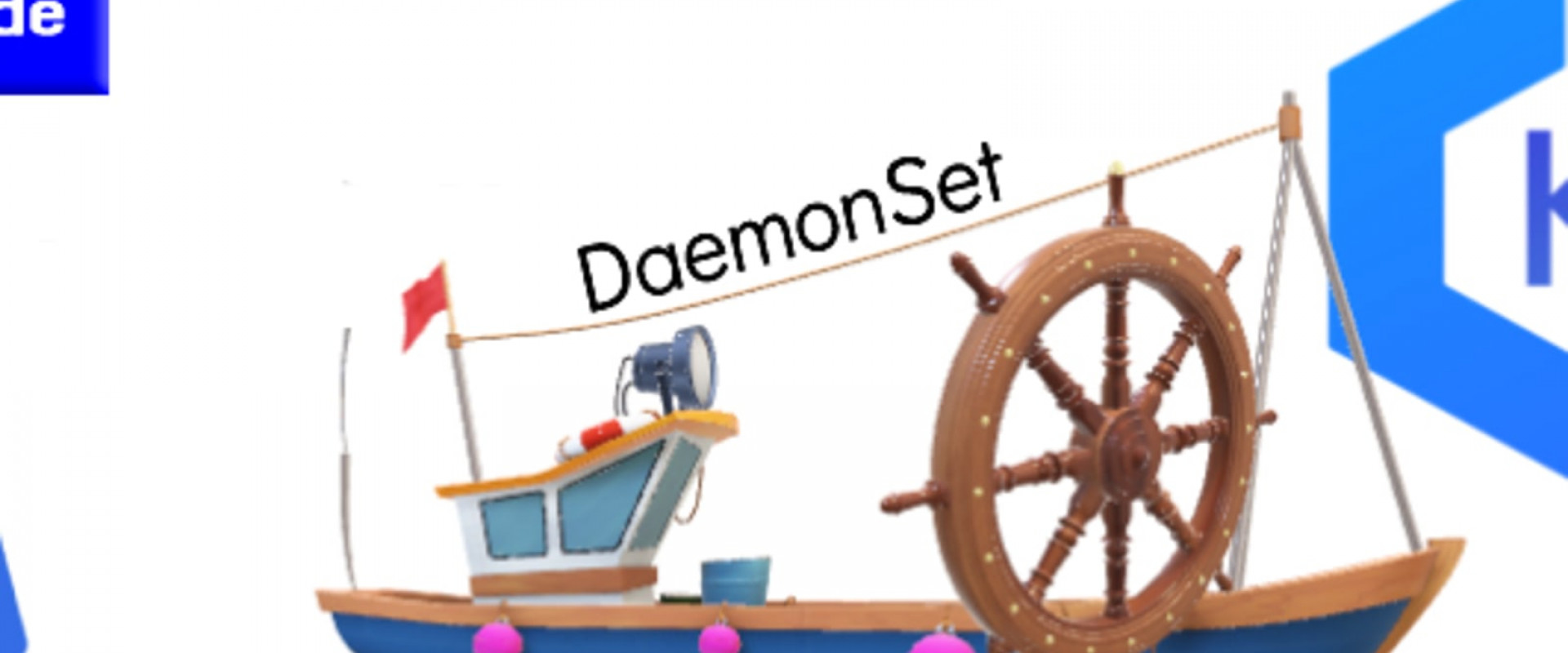Daemonset in kubernetes

A DaemonSet ensures that all (or some) Nodes run a copy of a Pod. As nodes are added to the cluster, Pods are added to them. As nodes are removed from the cluster, those Pods are garbage collected. Deleting a DaemonSet will clean up the Pods it created.
Some typical uses of a DaemonSet are
Running a cluster storage daemon, such as glusterd, ceph, on each node.
Running a logs collection daemon on every node, such as fluentd or logstash.
Running a node monitoring daemon on every node, such as Prometheus Node Exporter, Sysdig Agent, collectd, Dynatrace OneAgent, AppDynamics Agent, Datadog agent, New Relic agent, Ganglia gmond, or Instana Agent.
In a simple case, one DaemonSet, covering all nodes, would be used for each type of daemon. A more complex setup might use multiple DaemonSets for a single type of daemon, but with different flags and/or different memory and cpu requests for different hardware types.
Example
Create a DaemonSet
The daemonset.yaml file below describes a DaemonSet that runs the fluentd-elasticsearch Docker image
# cat daemon.yml
apiVersion: apps/v1
kind: DaemonSet
metadata:
name: fluentd-elasticsearch
namespace: kube-system
labels:
k8s-app: fluentd-logging
spec:
selector:
matchLabels:
name: fluentd-elasticsearch
template:
metadata:
labels:
name: fluentd-elasticsearch
spec:
tolerations:
- key: node-role.kubernetes.io/master
effect: NoSchedule
containers:
- name: fluentd-elasticsearch
image: quay.io/fluentd_elasticsearch/fluentd:v2.5.2
resources:
limits:
memory: 200Mi
requests:
cpu: 100m
memory: 200Mi
volumeMounts:
- name: varlog
mountPath: /var/log
- name: varlibdockercontainers
mountPath: /var/lib/docker/containers
readOnly: true
terminationGracePeriodSeconds: 30
volumes:
- name: varlog
hostPath:
path: /var/log
- name: varlibdockercontainers
hostPath:
path: /var/lib/docker/containers
Create a DaemonSet based on the YAML file
# kubectl create -f daemonset.yml
daemonset.apps/fluentd-elasticsearch created
The fluentd-elasticsearch pod is running
# kubectl get pods --all-namespaces
NAMESPACE NAME READY STATUS RESTARTS AGE
default web-1 1/1 Running 1 42h
kube-system etcd-master-node 1/1 Running 12 43d
kube-system fluentd-elasticsearch-7v2t7 1/1 Running 0 2m51s
kube-system fluentd-elasticsearch-bql5j 1/1 Running 0 2m51s
kube-system kube-apiserver-master-node 1/1 Running 13 43d
How Daemon Pods are Scheduled
Scheduled by DaemonSet controller
Normally, the machine that a Pod runs on is selected by the Kubernetes scheduler. However, Pods created by the DaemonSet controller have the machine already selected (.spec.nodeName is specified when the Pod is created, so it is ignored by the scheduler). Therefore:
The unschedulable field of a node is not respected by the DaemonSet controller.
The DaemonSet controller can make Pods even when the scheduler has not been started, which can help cluster bootstrap.
FEATURE STATE: Kubernetes v1.16 beta
A DaemonSet ensures that all eligible nodes run a copy of a Pod. Normally, the node that a Pod runs on is selected by the Kubernetes scheduler. However, DaemonSet pods are created and scheduled by the DaemonSet controller instead. That introduces the following issues
Inconsistent Pod /div>
Pod preemption is handled by the default scheduler. When preemption is enabled, the DaemonSet controller will make scheduling decisions without considering pod priority and preemption.
ScheduleDaemonSetPods allows you to schedule DaemonSets using the default scheduler instead of the DaemonSet controller, by adding the NodeAffinity term to the DaemonSet pods, instead of the .spec.nodeName term. The default scheduler is then used to bind the pod to the target host. If the node affinity of the DaemonSet pod already exists, it is replaced. The DaemonSet controller only performs these operations when creating or modifying DaemonSet pods, and no changes are made to the spec.template of the DaemonSet
Communicating with Daemon Pods
Some possible patterns for communicating with Pods in a DaemonSet are:
Push: Pods in the DaemonSet are configured to send updates to another service, such as a stats database. They do not have clients.
NodeIP and Known Port: Pods in the DaemonSet can use a hostPort so that the pods are reachable via the node IPs. Clients know the list of node IPs somehow and know the port by convention.
DNS: Create a headless service with the same pod selector, and then discover DaemonSets using the endpoints resource or retrieve multiple A records from DNS.
Service: Create a service with the same Pod selector, and use the service to reach a daemon on a random node. No way to reach a specific node.
Updating a DaemonSet
If node labels are changed, the DaemonSet will promptly add Pods to newly matching nodes and delete Pods from newly not-matching nodes
we can modify the Pods that a DaemonSet creates. However, Pods do not allow all fields to be updated. Also, the DaemonSet controller will use the original template the next time a node (even with the same name) is created.
we can delete a DaemonSet. If you specify --cascade=false with kubectl, then the Pods will be left on the nodes. If you subsequently create a new DaemonSet with the same selector, the new DaemonSet adopts the existing Pods. If any Pods need replacing the DaemonSet replaces them according to its update strategy.
Recent Comments
No comments
Leave a Comment
We will be happy to hear what you think about this post